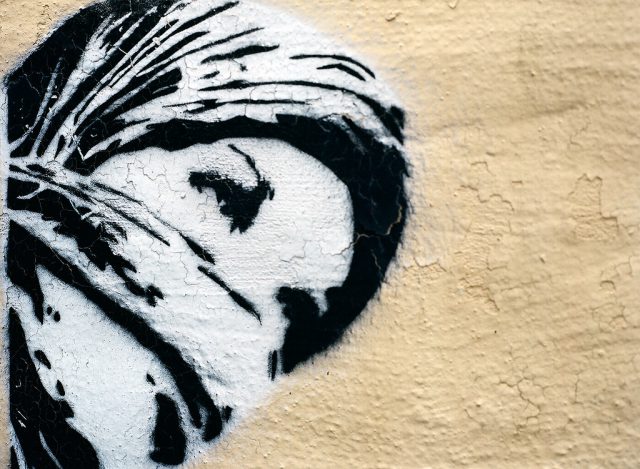
On 6 October, al-Naba, Islamic State’s Arabic language policy-oriented magazine, released the first official statement endorsing the participation of female combatants in defensive jihad (jihad al-daf). Although there have been a handful of references discussing the possibility of female combatants—the al-Zura Foundation in 2015, al-Naba in December 2016, and in Rumiyah in July 2017—this new document indicates a shift in IS strategy. Given the groups strict adherence to gender-binary roles for the past three years, the changed rhetoric is somewhat surprising, but not unexpected. Terrorism scholars have been debating the likelihood of ideologues approving female combatants in salafi-jihadi practice for years, and even more so lately as a result of IS’s severe territorial and manpower losses. This statement is significant from ideological, practical and organisational command and control perspectives.
In the narrative of salafi-jihadi organisations, women have mostly been afforded supportive roles such as homemaking, educating and child-rearing, rather than combat roles. Excluding women from combat is ‘the product of serious ideological inconsistency’, as the classical Islamic doctrine of jihad al-daf, which salafi-jihadi organisations use to legitimise and justify their actions, mandates all Muslims to take up arms on an individual basis. That includes men, women, children and slaves, and no permission is required to do so.
When it was at its strongest, IS emphasised offensive jihad (jihad al-talab) as well as defensive. The application of jihad al-talab may have been used as one justification (among many others) for prohibiting female fighters, as it is waged at a state, rather than individual, level and involves a more complex set of rules. The dismantling of the caliphate has made offensive jihad practically impossible, and so IS has reverted to solely defensive warfare. It’s hard to know exactly why IS has changed its stance on female fighters at this stage—ideological inconsistencies didn’t hinder recruitment. Regardless, the rhetorical shift is important, and indicates that IS is getting desperate.
Officially endorsing women’s roles in combat allows the emir to retain authority. An official call by IS urging women to ‘throw on your fighting gear’ defused the likelihood of a ‘sexual revolution’ in which committed female fighters may have taken it upon themselves to carry out violent jihad, despite not being officially authorised by an emir. However, this also demonstrates that authority still lies with the emir to control the parameters within which women operate—meaning he could rescind this liberty, too.
As argued by Lizzy Pearson, the sanctioning of female combatants demonstrates that IS’s state-building project is no longer viable. Considering that the caliphate was built on creating polar opposite roles for men and women, endorsing female fighters blurs the gender-binary roles designated by the state. The move may have a strong impact on the group’s conservative male supporters, who won’t approve of mixing the sexes on the battlefield. But after its heavy losses, IS must now focus on maintaining momentum, spreading fear and keeping the ideological dream alive through defensive jihad conducted by individuals.
So, what does this mean in practice? Here are three observations for governments and policymakers about why they should be conscious of and prepare for the effects of this strategic shift.
First, it’s indeed possible that many women around the world have been waiting for an official statement allowing them to engage in violence. Even before the official statement, there were a handful of examples over the past 14 months of women who independently planned and executed attacks in Morocco, France, Kenya and Indonesia. There’s no reason to believe that women won’t continue to carry out such attacks. Governments should be prepared, and not surprised.
Second, if governments are to holistically integrate gender perspectives into strategies for countering and preventing terrorism and violent extremism, prevailing gender stereotypes about women in political violence must be dismantled. The categories of ‘mothers, monsters and whores’ are often used in discourse analysing women’s involvement in political violence. Those groupings subordinate women, deny them agency and create monolithic understandings of women in terrorism. Although there’s been some attempt to change the language referring to women in terrorism—specifically, at the international level through various UN Security Council resolutions—there’s still a strong tendency to depict women as victims of terrorism who have been manipulated by recruiters or who have been forced into these situations against their will. Of course, that’s not to deny that many women have been victims of terrorist violence, but demonstrates that it’s necessary to move beyond stereotypes to better understand the complex nature of women’s involvement in terrorism.
Finally, we must be aware that terrorist organisations capitalise on gender stereotypes for tactical gain and strategic opportunity; the fact that women are viewed with less suspicion than men means that women are used by terrorist organisations to achieve maximum impact without being detected by security forces. For example, since 2014, Boko Haram has used more than 100 female suicide bombers on operations. The international community needs to work hard to deconstruct dominant attitudes towards women in political violence and develop sustainable social and security mechanisms that account for the varied roles that women play in terrorist organisations. This means that women need to be at the centre of all discussions on policy and program design, implementation and evaluation. If we succeed in this, we can develop more nuanced and sustainable approaches to countering and preventing terrorism that holistically integrate gender perspectives at their core.

